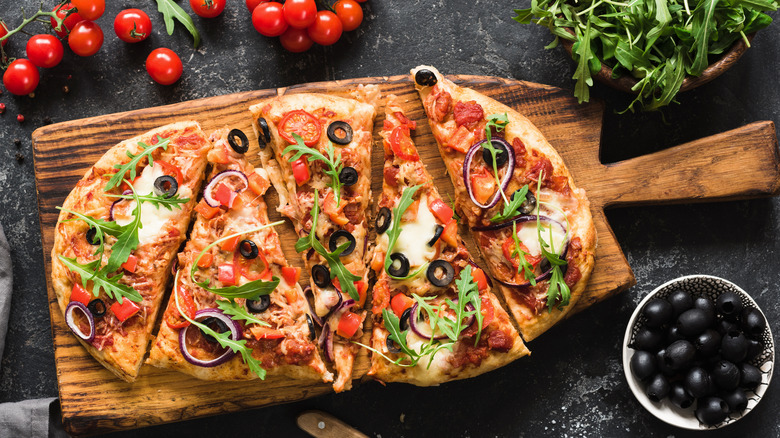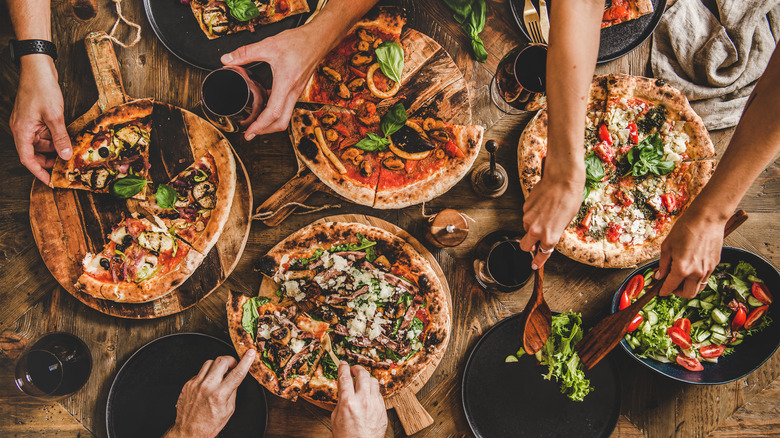Here's How To Make Pizza Healthier
It might sound like a tease to suggest that pizza fits into a healthy diet, but it's not as far from the truth as you might expect. Before you run out to the closest hole in the wall and grab a greasy slice or two to take home, it might be helpful to consider what can make pizza a balanced choice. If eating a deep dish, cheese-loaded pizza every now and then makes you a happier person, that's totally fine for special occasions. But, if you want to regularly enjoy pizza without worrying about being unhealthy, here are some helpful tips.
Donna Rose, a registered dietitian, tells Delish that not all pizza has to be high in fat and calories. Instead of always getting takeout pizza, choose to prepare your own pizza from scratch instead and make a fun night out of it. This way, you'll be able to monitor all the ingredients, minimize unhealthy additions, and opt for plenty of vegetables instead of pounds of cheese.
Rose recommends starting with a thin crust, which will already cut out the starch content. Chef Pasquale Cozzolino explains to Eat This, Not That! that since the crust is usually made with refined white flour, it causes an insulin spike which makes you crave even more carbs. Besides rolling your dough out thin, you can also use more wholesome flours and even let the dough ferment, according to Cozzolino.
What toppings should you pile on?
Once you've reduced the starch, you'll have more space to fill up your pie with vegetables and tomatoes, which are high in vitamin A, C, potassium, phosphorous, folic acid, and beta-carotene among numerous nutrients, explains Donna Rose to Delish. It's also a good tip to make your own tomato sauce using canned crushed tomatoes, since SFGate indicates pre-made, store-bought sauces are often high in sugar.
Unless you're pre-cooking them in lots of oil, any vegetable pizza topping is a good choice, and the more the better to increase the vitamin, mineral, and antioxidant content of your pizza. Additionally, registered dietitian Amy Kimberlain explains to Everyday Health that vegetables are high in fiber, which will keep you satiated and less likely to overindulge.
As for the cheese, Eat This, Not That! notes that reducing the amount by about half will lower calories and the saturated fat content. You don't have to skip out on it entirely since cheese is still a good source of protein and calcium according to Chelsea Amer, a registered and certified dietitian (via Insider). However, you can make some adjustments with your choices and pick options that are naturally lower in fat and high in flavor, such as Parmesan, provolone, ricotta, and part-skim mozzarella (via Food Network).
For all the meat lovers, Food Network recommends opting for leaner cuts of meat (for example, salami instead of pepperoni) that will add plenty of protein while keeping the saturated fat low. With these tips, pizza really can be part of a balanced diet.

